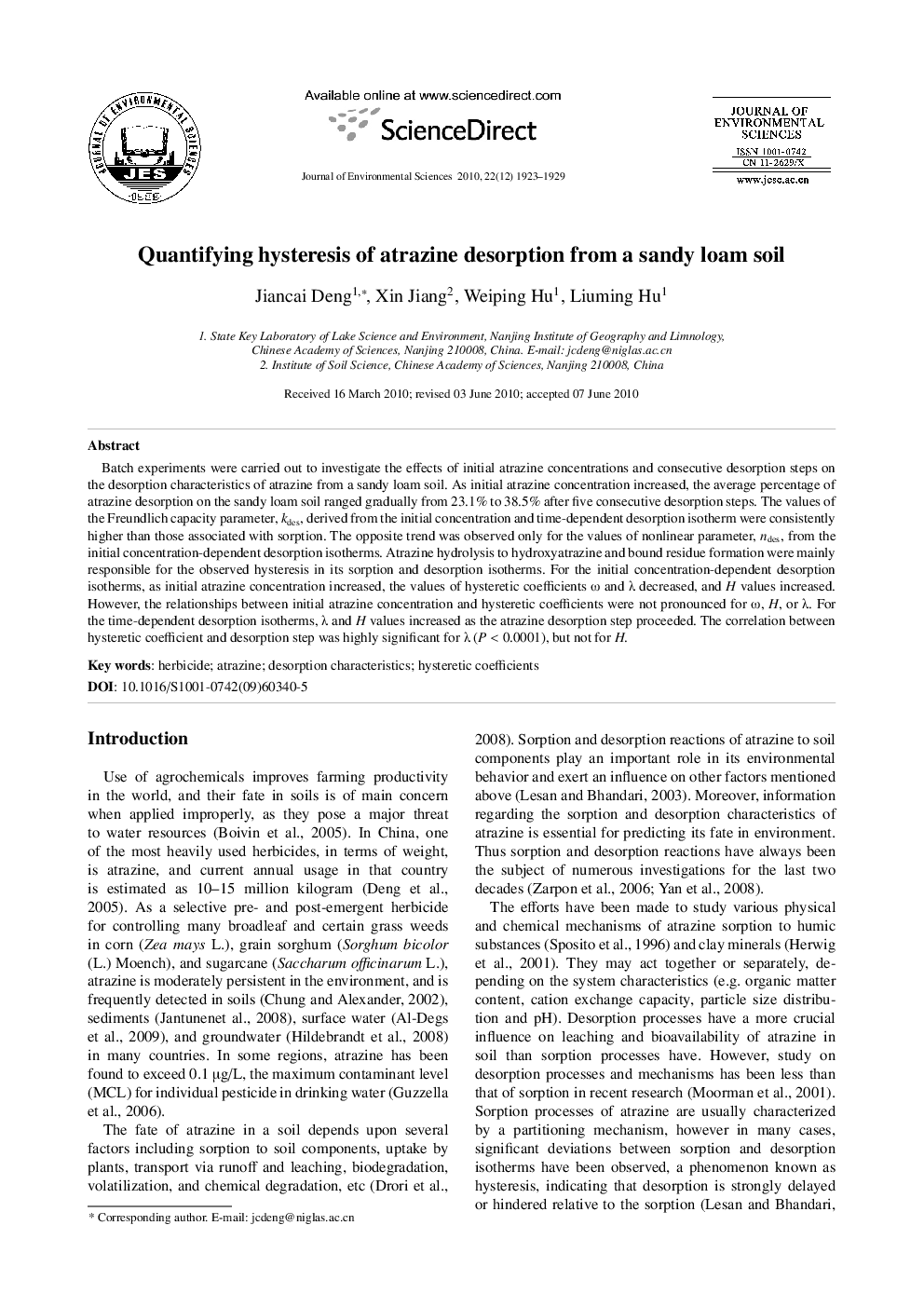| Article ID | Journal | Published Year | Pages | File Type |
|---|---|---|---|---|
| 4455902 | Journal of Environmental Sciences | 2010 | 7 Pages |
Batch experiments were carried out to investigate the effects of initial atrazine concentrations and consecutive desorption steps on the desorption characteristics of atrazine from a sandy loam soil. As initial atrazine concentration increased, the average percentage of atrazine desorption on the sandy loam soil ranged gradually from 23.1% to 38.5% after five consecutive desorption steps. The values of the Freundlich capacity parameter, kdes, derived from the initial concentration and time-dependent desorption isotherm were consistently higher than those associated with sorption. The opposite trend was observed only for the values of nonlinear parameter, ndes, from the initial concentration-dependent desorption isotherms. Atrazine hydrolysis to hydroxyatrazine and bound residue formation were mainly responsible for the observed hysteresis in its sorption and desorption isotherms. For the initial concentration-dependent desorption isotherms, as initial atrazine concentration increased, the values of hysteretic coefficients ω and λ decreased, and H values increased. However, the relationships between initial atrazine concentration and hysteretic coefficients were not pronounced for ω, H, or λ. For the time-dependent desorption isotherms, λ and H values increased as the atrazine desorption step proceeded. The correlation between hysteretic coefficient and desorption step was highly significant for λ (P < 0.0001), but not for H.
